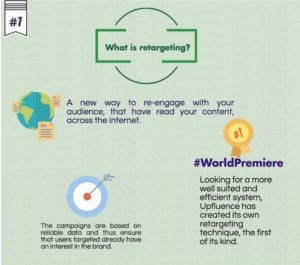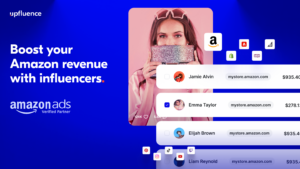[Estimated reading time : 6 minutes]
Today’s digital marketers have a wide range of tools available to get their message out. Although search and banner advertising still remain useful, influencer marketing, social media, and inbound marketing have all become an integral part of an effective marketing campaign.
A job that once consisted of purchasing ads on top search engines now requires a comprehensive strategy to reach the right people, at the right time.
While advertisers still focus on getting their message in front of as many viewers as possible, the internet has made it easier to get a company’s message in front of the right people – which is far more important. Particularly for B2B markets, finding and connecting with viewers that are actually interested in your product is critical to maximize ROI.
But attracting viewers to your website once isn’t enough. With only 2% of customers converting on their first visit, marketers need to continue to connect with the other 98% in order to close the sale.
How do you do this? With retargeting.
What is retargeting?
Retargeting has been a part of the web since 1998. Two years after inventing “cookies” to track user shopping carts, DoubleClick discovered that this same technology could be used to re-target users who had already made an initial visit to a website.
Once a visitor made it to a company’s website, the visitor would be targeted with additional advertisement and deals to help incentivize them to return.
Retargeting created a revolution in advertising. While previous ads (including those on TV, radio, print, and online) focused on paying for as many eyeballs as possible, the invention of retargeting allows advertisers to target the right people – focusing on quality over quantity.
Traditional retargeting is still used today, much in the same way it was initially implemented in 1998. Why? Because it works.
Retargeting is one of the most efficient marketing tools because it focuses on reaching out to people who have already presented an interest in your brand. If a visitor made it to your site but didn’t buy, sharing an ad that reveals a 10% off coupon will have a much higher CTR than showing that same coupon to someone without any previous exposure to your company. Using data collected from previous visits makes it much easier to segmentize and create avatars for your key demographics – and act on this information.
One popular example of a company doing this is Amazon.com. Once a consumer visits a product on Amazon, they continue to see ads for that product while searching the rest of Amazon and the web. Each retargeted ad has the potential to grow the user’s interest in making the final purchase.

As retargeting continues to become more complex, it’s possible to track a variety of actions that a visitor does while on the site. Did they download an ebook? Add a product to their shopping cart? Each one of these activities reveals a potential venue for further connecting with them to lead them down the sales pipeline.
While retargeting offers a more effective way to drive sales than general banner ads, it has one major drawback – in order to be targeted, the potential customer must have made a visit to your website. This completely ignores leads who have interacted with your brand on external websites. Which is where native retargeting comes into play.
What is “native retargeting” and how does it work?
Native retargeting consists of disseminating native advertising to users that have read sponsored posts on an influencer’s site during a brand campaign.

In other words, native retargeting allows brands to retarget potential clients who have shown an interest in their product by visiting and reading an article posted on an external site.
The goal of native advertising and retargeting is to trap invite the user to join the brand’s ecosystem. Once the user has read a post about the brand, they begin receiving ads directing them to the brand’s website – or posts by other influencers. Each campaign incrementally leads the user down the path to purchase – one step at a time.
The benefit of native retargeting is that you’re developing an aura of grandeur around your brand through multiple touch-points. Each interaction introduces the user to additional thought leaders and influencers who have something positive to say about your brand. Through these overlapping interactions, the user begins to associate your brand as an industry leader – making you the obvious choice when it comes time to make a purchase.
Traditional retargeting vs native retargeting – which one should you choose?
The following table illustrates the differences between both traditional retargeting and native retargeting:
[table id=8 /]
As the list above illustrates, there are benefits to both forms of retargeting. While traditional retargeting may be more relevant at the end of the sales funnel, native retargeting is an excellent way to enhance your business’ brand with users still involved in researching a solution to their problem.
Ultimately, including both form of retargeting creates a well-rounded digital marketing campaign.
Conclusion
Native retargeting is the newest innovation in digital marketing. Although it’s unlikely to replace traditional retargeting and other forms of advertising, it will undoubtedly grow into a major player in the online marketing space.
As influencer marketing continues to grow in popularity and use, the ability to guide users from one influencer to the next will help brands establish their credibility among potential customers. Particularly for brands needing to connect with buyers early on in their buying journey, native advertising will play an invaluable role.












